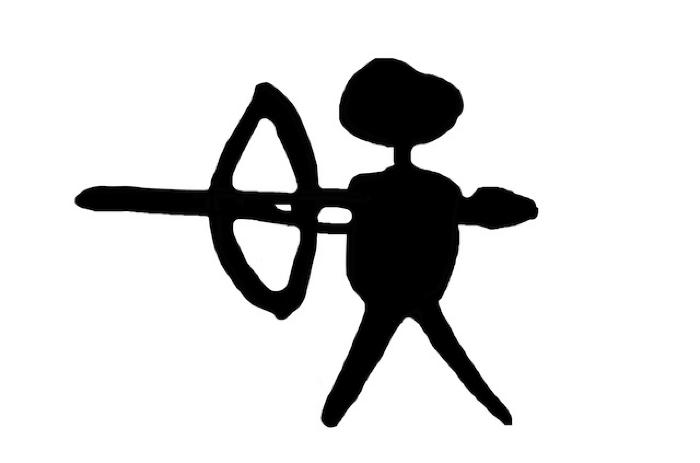Bow — Qitguyaq

Before the introduction of firearms, bows and arrows were an essential Alutiiq hunting tool. Craftsmen carved bows from hard, flexible woods. Yellow cedar was preferred, although red cedar and western yew were also used. Before carving, people dried the wood, although they might soak a finished bow in water to improve its flexibility. The typical bow had a narrow grip and flattened wings. Hunters often added a backing of sinew to strengthen the tool as it aged.
In Prince William Sound, hunters held their bows parallel to the ground. An archer gripped the bow in his outstretched arm, palm up. He then used the middle finger of his other hand to pull the bowstring, while his thumb and forefinger held the noch end of an arrow. Arrows were carved of cedar and other straight-grained woods and held in cylindrical quivers decorated with painted designs. Bows and arrows were used primarily to target waterfowl and land mammals. Hunters continued to pursue ducks with this weaponry well into the 1930s because these quiet tools did not startle birds like a shotgun. However, at sea, hunters had difficulty keeping their bowstring dry and often preferred to use a spear thrower.
